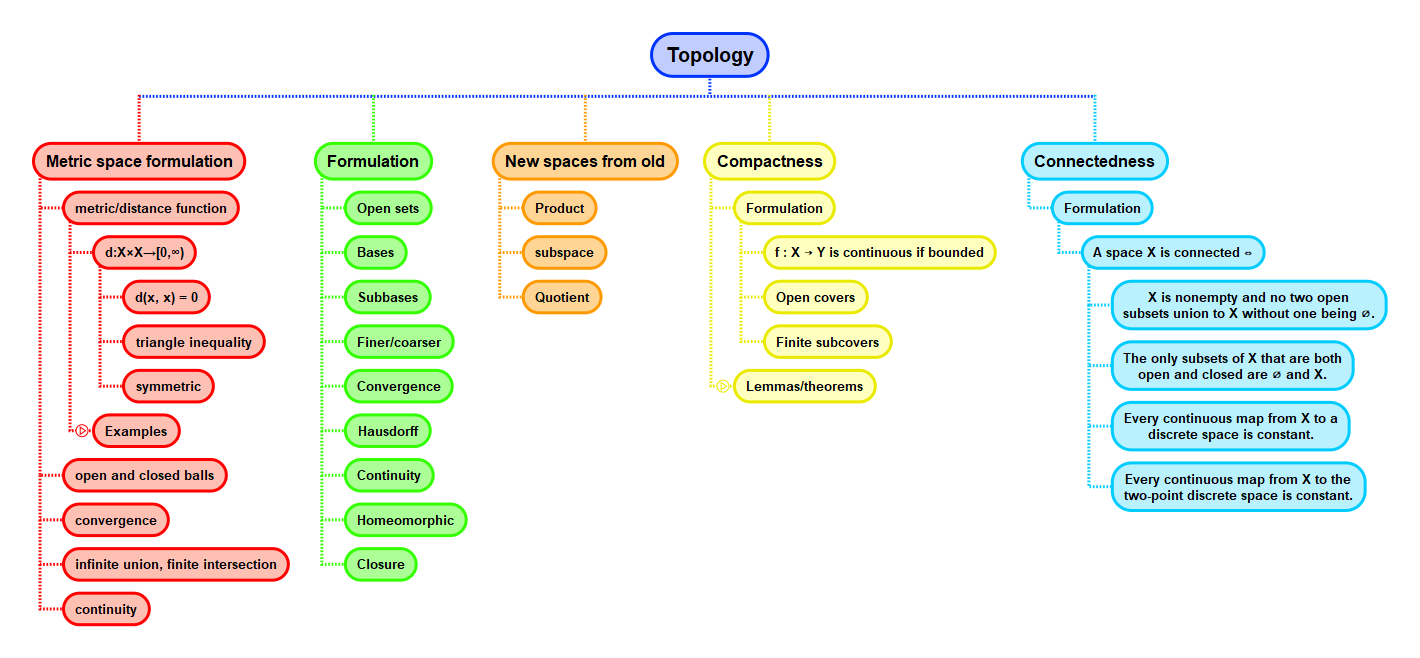Math and science::Topology
Subbasis
Let \( X \) be a set. A subbasis for a topology on \( X \) is a collection of subsets of \( X \) whose union equals \( X \).
Let \( \mathcal{S} \) be a subbasis for a topology on \( X \). The set of all unions of finite intersections of elements of \( \mathcal{S} \) is a topolgy on \( X \). This topology is said to be generated by the subbasis \( \mathcal{S} \).
It can be proved that the generated set forms a valid topology.
Basis vs subbasis
A subbasis is an even more lightweight description of a topology compared to a basis. A subbasis can generate a basis for the same topology: the collection of all finite intersections of subbasis elements forms a basis.
Context

